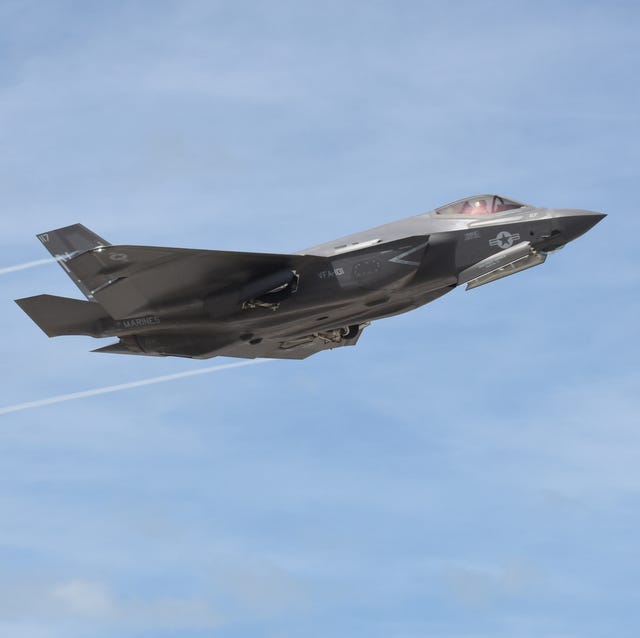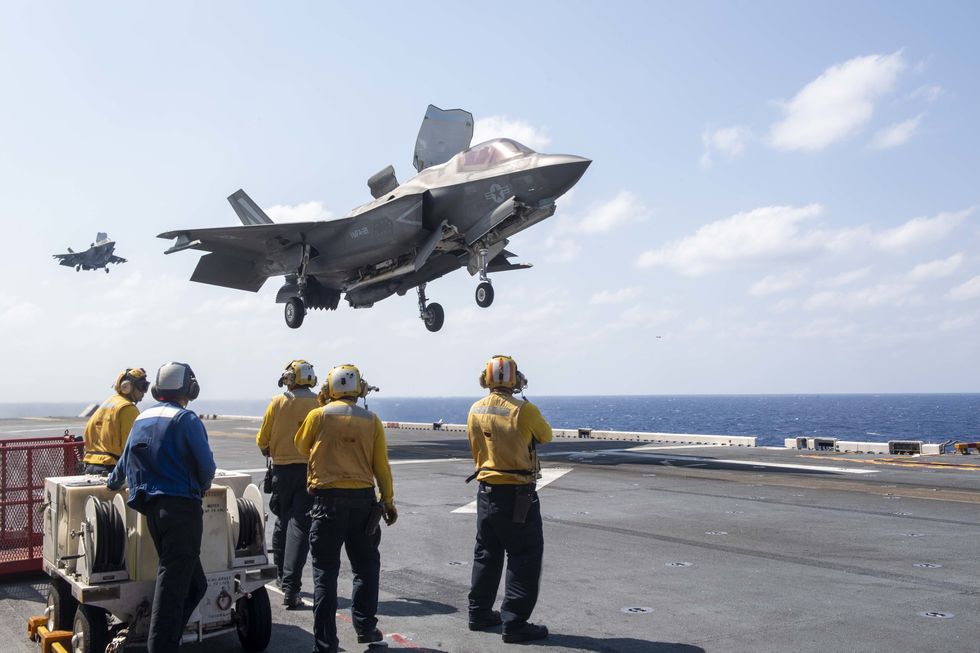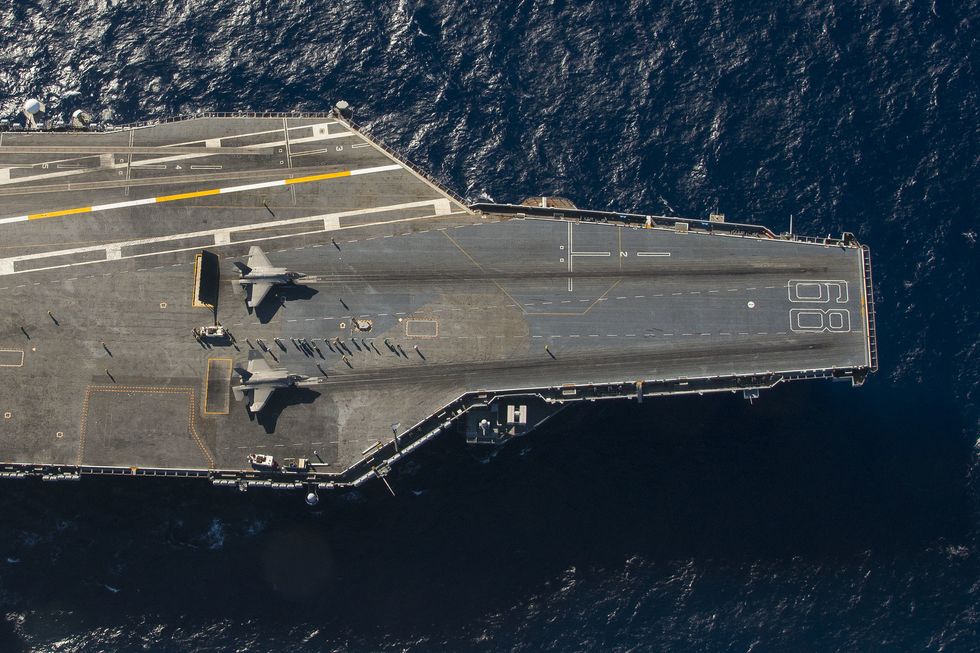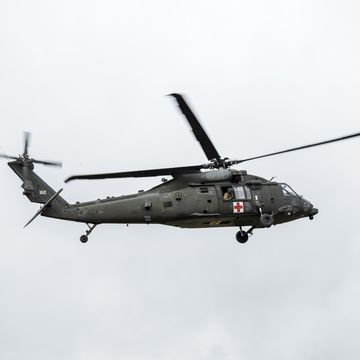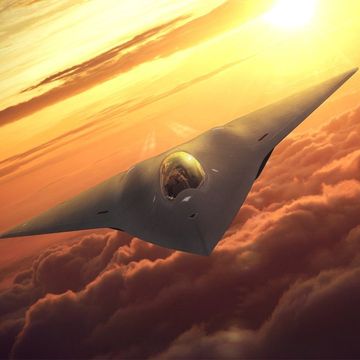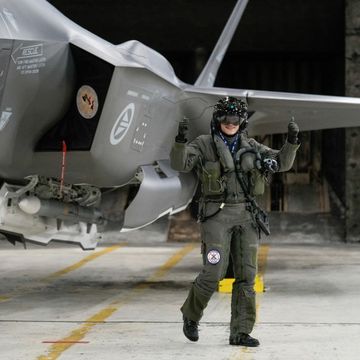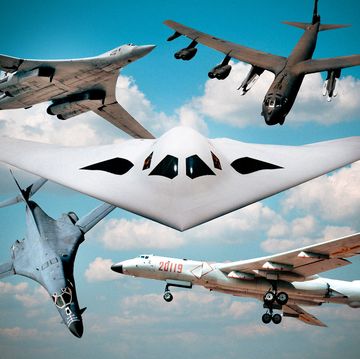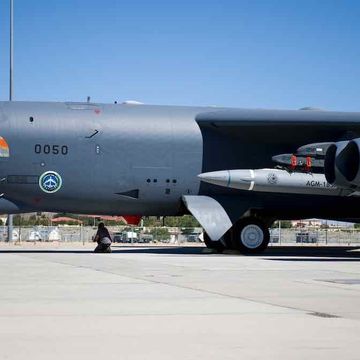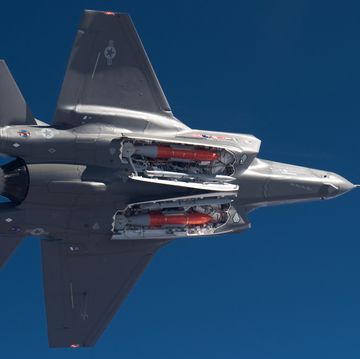- The $1 trillion F-35 program has resulted in versions of the jet unable to fly supersonic for more than a brief period.
- The stresses of flying at supersonic speed threaten to erode a F-35's stealth coating and damage key antennas embedded in the tail of the aircraft.
- Instead of fixing the issue, the Pentagon has decided it is simply not important and restricted how long certain versions of the F-35 can fly at supersonic speeds.
The Pentagon is placing permanent flight restrictions on the F-35 Joint Strike Fighters flown by the Navy and Marine Corps, restrictions that limit the jets to short bursts of supersonic speed at high altitudes. A deficiency in the aircraft’s design risks damage to the airplane’s tail section during sustained supersonic flight. The Department of Defense has decided the issue isn’t worth correcting, but it could prevent the jet from carrying out supersonic intercepts.
The F-35 Joint Strike Fighter is produced in three flavors: the “vanilla” F-35A produced for the Air Force, the vertical takeoff and landing F-35B variant made for the U.S. Marines, and the Navy’s F-35C variant (above) designed to cope with the stresses of taking off and landing from aircraft carriers. All three versions look very similar inside and outside, and most share a majority of internal components.
Defense News reports that one major deficiency that affects -B and -C versions is permanent and the Pentagon has no plans to correct. During supersonic flight at extremely high altitudes, the F-35’s skin warms to the point where the heat could damage the stealthy coating on the surface of the aircraft. Such flight also risks damage to the antennas on the rear of the aircraft. If the coating wears away at high speed the aircraft would instantly become easier for adversaries to detect on radar. Damage to the antennas could also cripple the pilot’s ability to communicate and receive data from nearby friendly forces.
As a result, the Navy and Marines Corps’ pilots will fly with restrictions placed on their use of supersonic flight. F-35s will be restricted to brief bursts of Mach 1+ speed, though exactly at what altitude and for how long is unknown. The F-35 Joint Program Office, which manages the entire F-35 enterprise, says it would take too long to develop a new, more durable stealth coating. The Air Force’s -A version will not fly with the restriction, though it is not clear why.
The F-35 program previously classified the supersonic flight issue as a “Category 1” deficiency, the most serious deficiency issue. Instead of fixing it, the program has simply decided it’s not a serious problem after all and is moving on. According to experts quoted by Defense News, there are differences of opinion of how serious the problem is. The F-35 does not rely on supersonic flight to the same extent as other jets, particularly the F-22, but another air warfare expert quoted says the loss of afterburners could give F-35 pilots fewer options in a dogfight.
How big of a problem is this? The military has probably not had a fighter capable of sustained supersonic flight for a half century or more, which tells you how important going supersonic is traditionally to air-to-air combat. While disappointing that a trillion dollar jet can’t fly supersonic, that was never supposed to be one of the F-35’s core strengths. The F-35 is designed as an ambush predator that uses its stealth and networking capabilities to shoot down enemies before they enter visual—or dogfighting—range.
The most important question is how adversaries will use the F-35’s restrictions when planning missions against U.S. Navy and Marine Corps air power. Enemy air forces could try to force F-35s into a dogfight where they would be at a relative disadvantage. Such tactics are less useful, however, when the enemy doesn’t know where the F-35 is.
In the end, a lot depends on how much the F-35 performs in combat as advertised.
Source: Defense News

Kyle Mizokami is a writer on defense and security issues and has been at Popular Mechanics since 2015. If it involves explosions or projectiles, he's generally in favor of it. Kyle’s articles have appeared at The Daily Beast, U.S. Naval Institute News, The Diplomat, Foreign Policy, Combat Aircraft Monthly, VICE News, and others. He lives in San Francisco.
